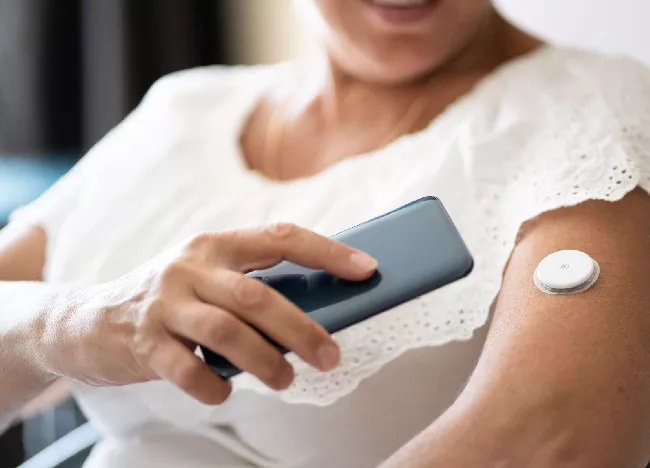
Today we are celebrating the publication of new guidelines by the National Institute of Health and Care Excellence (NICE) which recommend wider access to Flash and continuous glucose monitoring (CGM) for people living with diabetes on the NHS.
These new guidelines represent a shift towards a better understanding of technology as an integral part of diabetes management, rather than an added luxury.
We have been campaigning for better access to these technologies for many years and has been actively involved in responding to NICE’s consultation on this guideline update. We’re thrilled that our response to their consultation and our wider work pushing for better access to Flash and CGM has been heard - including via our more recent Diabetes is Serious and Cheque for Tech campaigns.
The new guidelines recommend that:
- all adults with type 1 diabetes should have access to either Flash or CGM
- all children with type 1 diabetes should have access to CGM and that
- some people with type 2 diabetes who use insulin intensive therapy (2 or more injections a day) should have access to Flash, for example if they experience recurrent or severe hypos, if they have a disability that means they cannot finger-prick test or if they would otherwise be advised to test 8 or more times a day.
We are also pleased to see the new guidelines recommending that the health system addresses the inequalities in Flash and CGM access that already exist – something we called for them to do in our response to the consultation on these guidelines.
While NICE only provides recommendations for the NHS in England and Wales, we think that the health service across the UK should adopt these tech recommendations as the minimum standard.
See detail on what these tech recommendations and other guidelines are from across the UK.
So, what happens now?
We know that many of you will understandably be keen to get access to Flash or CGM as soon as possible considering these new guidelines and we suggest that you speak to your diabetes team about this at your next appointment.
It’s important to note that these guidelines have only been published today, meaning local areas will need some time to put them into practice.
We will of course be working to ensure this happens. Not least by continuing to press the Government to prioritise diabetes care as the NHS tries to recover from the enormous impact of the coronavirus pandemic.
We’ll also monitor what’s happening, so we can make sure we’re helping you to navigate this change and that we’re supporting the NHS to get this right as well as we can.
Let us know how you get on
We need to make sure these guidelines are put into action. So, no matter where you live, you can access tech that will help you take control of your diabetes and live a happier and healthier life without painful finger pricking. You can help by telling us about your experience. Please fill in this form to share your story.
There is still work to do, but today here at Diabetes UK, we are celebrating a clear step towards many more people living with all types of diabetes having access to the technologies that can help them lives happier and healthier lives with the condition. You can also stay in the loop about our campaigning on this and other related issues here. Finally, you can learn more about diabetes technology and criteria for accessing it here.
NICE guidelines for adults with type 1 diabetes
NICE guidelines for for children with type 1 diabetes
NICE guidelines on people with type 2 diabetes
